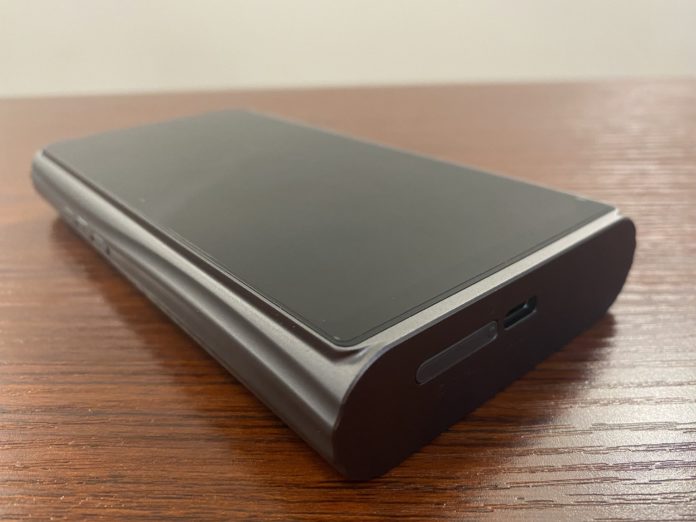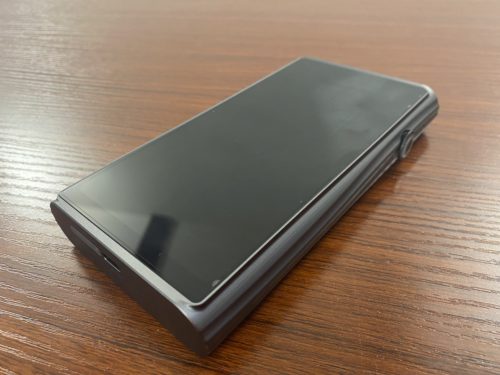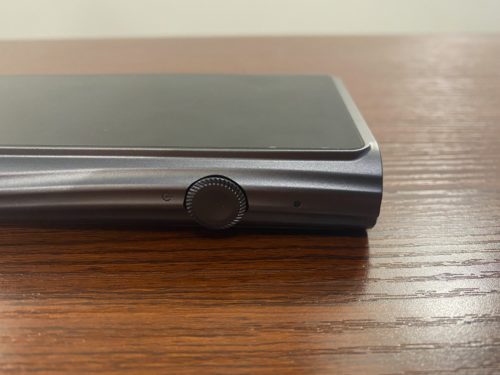Around this time last year, I reviewed the Shanling M8, which introduced the world to removable headphone sockets. It also sported some pretty sleek hardware, with high-end interior components and design. Now a year later and I’ve been able to get my hands on the follow-up to that model. This time Shanling is asking for a higher price for its flagship DAP series at $2799. Does the M9 do enough to warrant the upgrade?
What You Get
- M9 Player
- Headphone Sockets
- 3.5mm
- 3.5mm Pro
- 2.5mm
- 4.4mm
- USB Type C Charging Cable
- Warranty
Build
This six-inch screen is one of the most appealing players that Shanling has made so far in their limited catalog. This is a significantly sleeker design than its predecessor and feels a lot more natural to carry around, even when sporting high-grade materials. The aircraft-grade aluminum chassis brings a level of durability and prestige to this player that makes it live up to its price from the outside. Presentation is vastly improved, streamlining the M8’s most unique aspects and forming a device that feels more like a high-end Android smartphone than a conventional audio player. Of course, we can’t talk about the build without mentioning the return of Shanling’s swappable headphone sockets. It’s still an impressive way to feature so many options for inputs, as well as the rare 3.5mm balanced connection. Its return here is welcome, just make sure you don’t lose one.
Shanling keeps all sides of the device relatively clean otherwise, with only small buttons and charging ports not taking too much of the surface. The volume knob also doesn’t try to stand out, giving you a small pot that’s best approached from an angle whether it’s lying on your desk or you’re holding it in your hand. A micro SD card slot also makes an appearance next to the M9’s USB C input on the bottom side.
Design
A flagship-level DAP needs a flagship-level system, and thankfully, Shanling delivers the good when it comes to the interior. The M9 uses dual AKM DAC chips, specifically AK4499 EQ. These are some of the last remaining chips from AKM that Shanling can offer, so if you love the sound signature that AKM chips can bring, these will be some of the last models with them available, making the M9 all the more valuable in the long run. For its amp, the M9 features a fully balanced 4 channel circuit for improved conversions and little to no noise interference. The UI is powered by a Snapdragon 665 CPU running Android 10. Using the interface myself, the player is as smooth as ever, being both user-friendly to new users and familiar to those with current Android phones.
Sound Impressions
There are a few different modes to cycle through before obtaining the right level of volume on the M9. Like a lot of other Android DAPs, the M9 contains a few different options for gain, which affect the sound considerably based on the type of headphones/IEMs you’re using. In the pull-down menu, you can switch between high, medium, and low gain, with a separate option next to it specifically designed for driving higher impedance headphones. Playing around with the gain options, I found the setting most useful when trying out different IEMs with varying sensitivities. For instance, an IEM like the Kinera Nanna might benefit more from medium to high gain to get the full picture of its capabilities, while a model like the Campfire Andromeda might only need low to medium gain depending on the dynamics of what music you’re listening to. Then there’s the over-ear headphone setting, which delivers a great amount of power to a good number of headphones with higher resistances.
What happens here is that the amp circuits inside of the M9 provide a comfortable loudness for higher impedances, while supplying you plenty of headroom for adjustment. I switched between the Sennheiser 660s and the Beyerdynamic DT1990 and found myself impressed with the voluminous effort on display. However, it’s a more surface-level gain that doesn’t exactly give the timbre a whole lot more impact but rather showcases accuracy and clarity in a more transparent way. It feels like the resolution is tighter, and leans more neutral in tone, which complimented a fine assortment of headphones. Other more colorful headphones might not feel as transcended, at least as far as I’ve listened to on lossless 44.1kHz PCM.
Dissecting the frequency response, I could tell that the M9 was going to be easier on certain elements like the bass timbre and treble coloration. As far as the low-end is concerned, a good amount of fidelity is established, with the M9 giving you a balanced section of bass output. The texture is respectfully clear and is able to produce a satisfying sub-bass bump to the timbre. It showcases great dynamics while also featuring a sense of tightness that evenly separates itself in tone from the rest of the response. Otherwise, the bass won’t push too far outside its limit.
The midrange also shares a natural tonality with the M9, while also giving the sound signature its widest range. The M9 delivers a more open response that gives certain details a better chance to push through. Musically, the M9 works to reproduce a timbre that appears true to the natural fidelity of how instruments sound and where they are in the mix. Not much else occurs in the treble department. Its tone is smoother out, but not to a point where it distracts from the resolution of the timbre. You still get a good sense of detail, but with a leaner response than the rest of the range.
Summary
If you were a fan of the Shanling M8, then the M9 has some strong upgrades to consider, but it’s definitely a change of a pure sound level. The signature here offers a different presentation, but its characteristics are still very clear and consistent throughout hours of testing. There are many flagship DAPs to consider, but with the M9 Shanling has put forth one of its best efforts yet, and I’m excited to see what they do to further innovate this line in the future.
The Shanling M9 is available at Audio46.
MAJORHIFI may receive commissions from retail offers.












